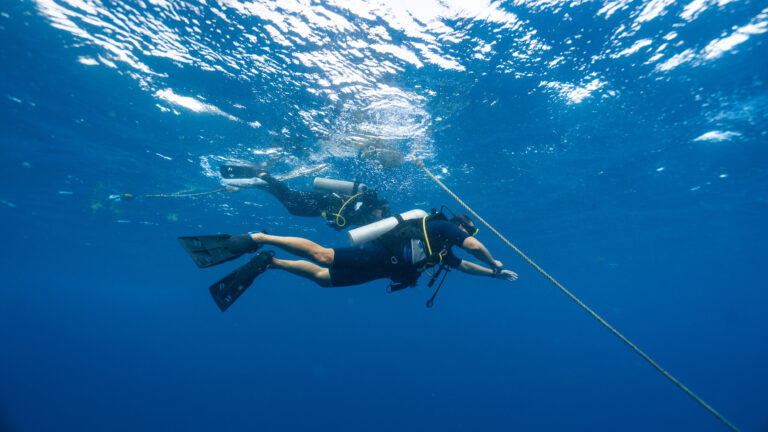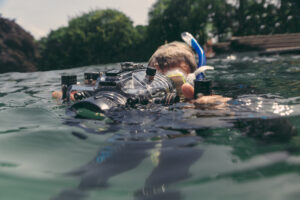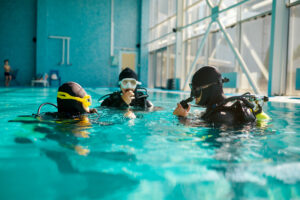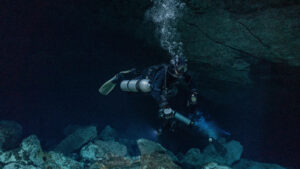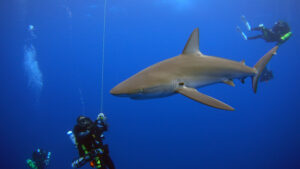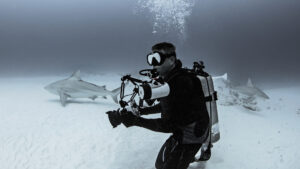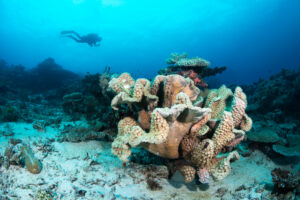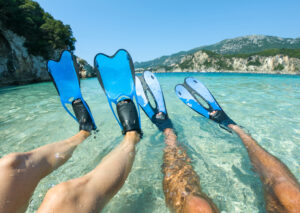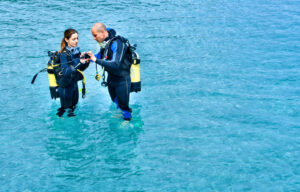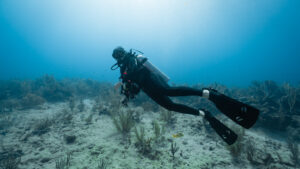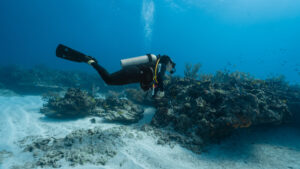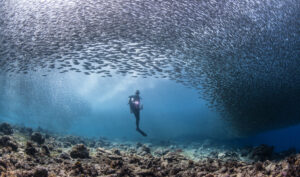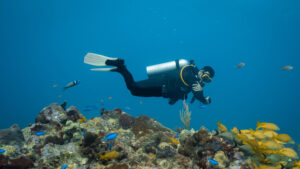What is Panic when Scuba Diving?
Panic in scuba diving refers to a sudden and overwhelming feeling of fear or anxiety that can severely impair a diver’s ability to think clearly and act appropriately. It is a critical issue in the sport because it can lead to dangerous situations underwater, where the margin for error is slim. Understanding panic is crucial for divers to ensure their safety and the safety of others. This entry examines the causes, symptoms, consequences, prevention strategies, and management techniques related to panic in scuba diving.
Causes of Panic in Scuba Diving
Panic in scuba diving can arise from a variety of physical, environmental, psychological, and physiological triggers. Physical triggers include equipment malfunctions, such as a regulator failure or mask flooding. When a diver’s equipment does not function as expected, it can induce a sense of helplessness, leading to panic. Similarly, becoming entangled in underwater vegetation or debris can create a sense of entrapment, exacerbating fear.
Environmental factors also play a significant role in triggering panic. Poor visibility can disorient divers, making it difficult to navigate or communicate with a buddy. Strong currents can make it hard to maintain position, leading to a feeling of loss of control. Encounters with marine life, especially large or unexpected creatures, can surprise and frighten divers, sometimes triggering panic.
Psychological triggers are equally important. Fear of the unknown, claustrophobia, and lack of experience can all contribute to a diver’s anxiety levels. Inexperienced divers may feel overwhelmed by the unfamiliar environment and the need to remember and apply various diving skills simultaneously. Claustrophobia can be particularly problematic in tight underwater spaces or inside wrecks and caves.
Physiological factors, such as cold water, nitrogen narcosis, and hypoxia, can also induce panic. Cold water can cause physical discomfort and shock, affecting a diver’s ability to function normally. Nitrogen narcosis, a condition caused by breathing nitrogen at high pressure, can impair judgment and increase anxiety. Hypoxia, or lack of oxygen, can cause confusion and panic if not promptly addressed.
Symptoms and Signs of Panic
Recognizing the symptoms and signs of panic is crucial for both self-awareness and the ability to assist a buddy in distress. Physical symptoms of panic include rapid, shallow breathing, increased heart rate, and shaking. These physiological responses are the body’s reaction to extreme stress and can further hinder a diver’s ability to manage the situation.
Behavioral signs of panic are often more noticeable. A panicked diver may exhibit irrational behavior, such as making uncontrolled or erratic movements. They might ignore standard procedures or safety protocols, which can escalate the situation. In severe cases, a diver might attempt a rapid ascent, which is extremely dangerous and can lead to decompression sickness.
Cognitive symptoms of panic include confusion, disorientation, and tunnel vision. A panicked diver may have difficulty thinking clearly and making decisions. They might become disoriented about their location or the direction to safety. Tunnel vision, where the diver’s focus narrows to a single point, can prevent them from noticing important details in their surroundings.
Understanding these symptoms and signs allows divers to take early action to manage panic, either in themselves or in their dive buddies. Recognizing early signs can help prevent the situation from escalating to a full-blown panic attack, which is much harder to control.
Consequences of Panic Underwater
The consequences of panic underwater can be severe and immediate. One of the most dangerous outcomes is a rapid, uncontrolled ascent. This can lead to decompression sickness, also known as “the bends,” which occurs when dissolved gases in the body form bubbles as pressure decreases too quickly. These bubbles can cause joint pain, paralysis, or even death if they enter critical areas like the brain or spinal cord.
Loss of buoyancy control is another critical consequence. A panicked diver may struggle to maintain neutral buoyancy, leading to unintended ascents or descents. This can result in barotrauma, which is injury caused by pressure changes, affecting the ears, sinuses, or lungs. Additionally, a diver who is unable to control their buoyancy may damage delicate underwater ecosystems or put themselves in further hazardous situations.
Beyond the immediate physical dangers, panic can have long-term impacts on a diver’s confidence and mental health. A traumatic panic episode can lead to a loss of confidence in one’s diving abilities, making future dives more stressful and less enjoyable. In some cases, divers may develop a fear of diving or even post-traumatic stress disorder (PTSD) related to their experience.
Prevention Strategies
Preventing panic in scuba diving involves a combination of proper training, equipment familiarity, thorough planning, and effective communication. Training and preparedness are fundamental. Divers should undergo comprehensive training that includes emergency procedures and stress management techniques. Regular practice of these skills can help build muscle memory, making it easier to respond calmly in a real emergency.
Familiarity with equipment is also essential. Divers should be comfortable with all aspects of their gear, including how to troubleshoot common problems. Regular equipment checks and maintenance can prevent many issues that might otherwise trigger panic. Being able to quickly and effectively deal with a malfunctioning regulator or a flooded mask can prevent a situation from escalating.
Thorough dive planning is another critical component. A well-planned dive includes considering potential risks and having contingency plans in place. Divers should discuss the dive plan with their buddies, including entry and exit points, maximum depth, bottom time, and emergency procedures. Knowing what to expect can reduce anxiety and increase confidence.
Effective communication and a reliable buddy system are vital for preventing panic. Clear communication signals and regular check-ins can help divers feel connected and supported. Having a trusted buddy who can assist if something goes wrong significantly reduces the likelihood of panic. Divers should practice communication and buddy skills regularly to ensure they can rely on them in an emergency.
Management and Recovery Techniques
Managing panic during a dive involves recognizing early signs and taking immediate steps to regain control. If a diver begins to feel panicked, they should focus on slowing their breathing. Deep, slow breaths can help reduce the physiological symptoms of panic and bring a sense of calm. If possible, the diver should find a stable position, such as holding onto a rock or the dive line, to help regain composure.
Another key technique is to stop and think. A diver should take a moment to assess the situation and remind themselves of their training. Focusing on simple, manageable tasks, such as checking their air supply or adjusting their buoyancy, can help break the cycle of panic. If the diver has a buddy, signaling for assistance can provide additional support and reassurance.
After a panic incident, recovery is crucial for long-term mental health and diving confidence. Divers should debrief with their buddies and instructors to understand what happened and how it was managed. Seeking professional help, such as a diving psychologist or counselor, can be beneficial if the panic incident was particularly traumatic. Addressing any lingering fear or anxiety is important to prevent future occurrences.
Building resilience to stress is an ongoing process. Regular mental and physical training, including techniques such as visualization and mindfulness, can help divers develop better control over their responses to stress. Divers should continue to build their experience gradually, choosing dives that match their comfort and skill levels.
Key Takeaways
Understanding and managing panic is essential for safe scuba diving. By recognizing the causes, symptoms, and consequences of panic, and implementing effective prevention and management strategies, divers can significantly reduce their risk of experiencing panic underwater. Emphasizing training, preparedness, equipment familiarity, and communication are key components in creating a safe and enjoyable diving experience.

